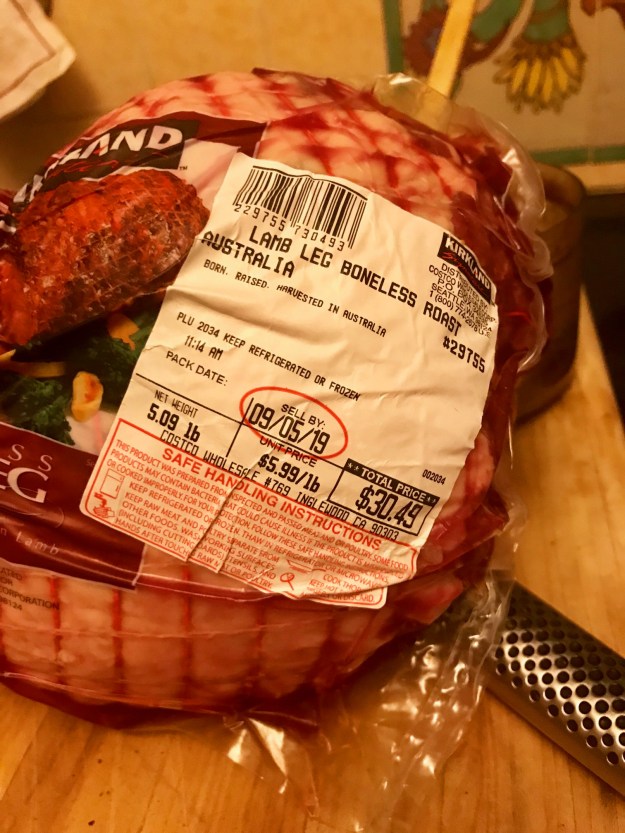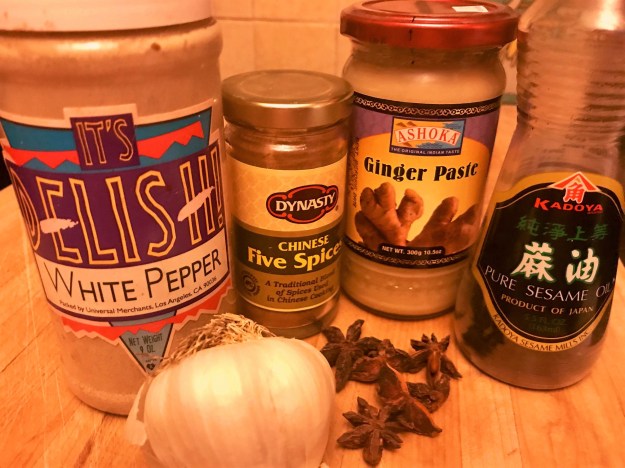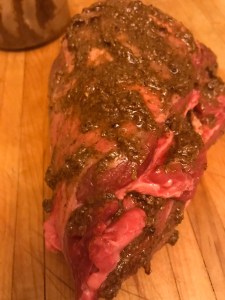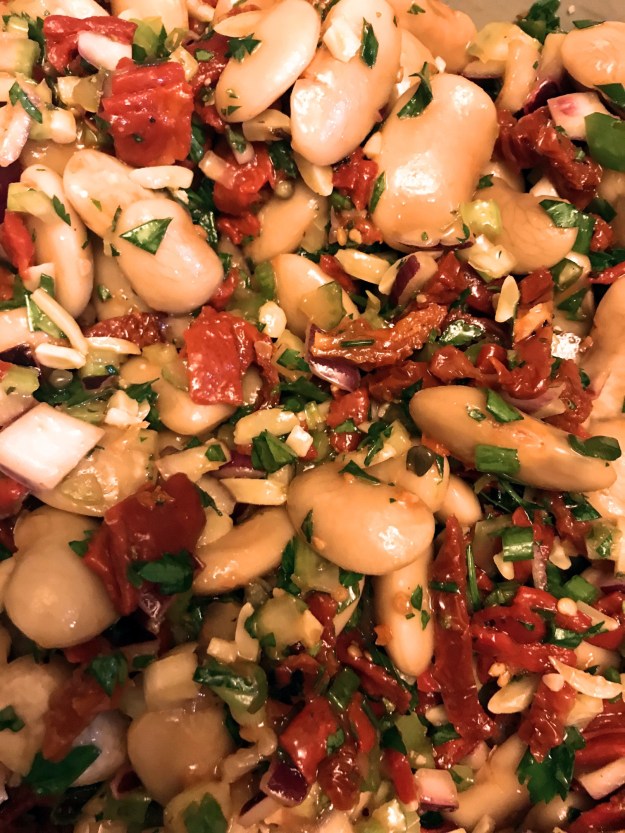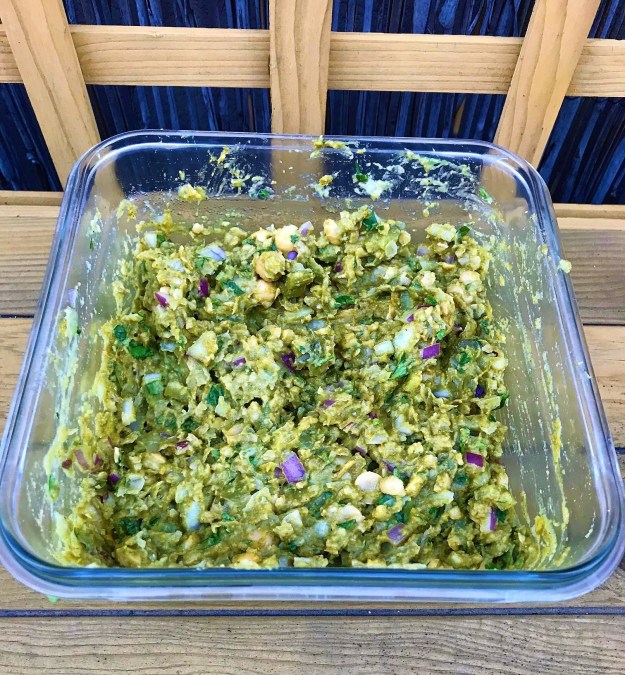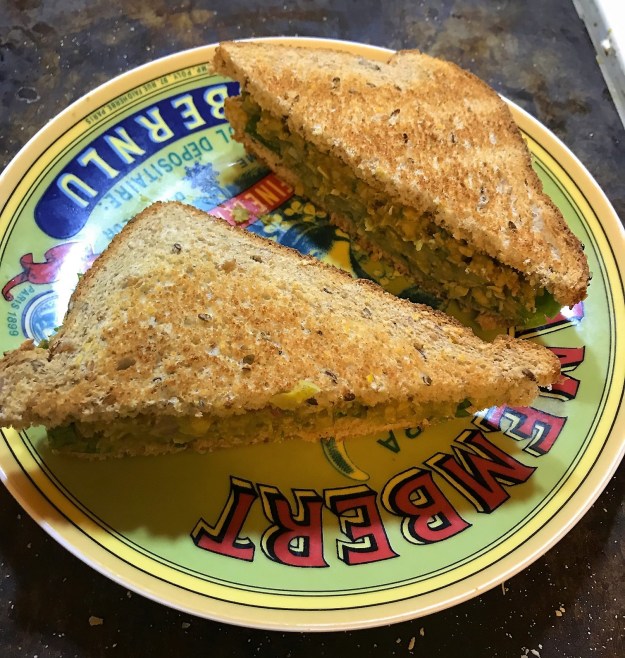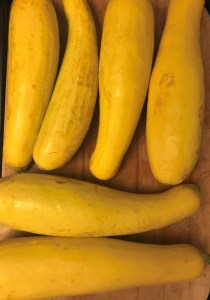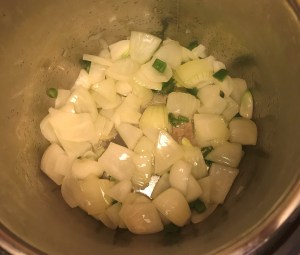
The Warhol print was probably tastier.
I realize that I tool on Campbell’s soups a lot — probably more than they deserve, especially since I am descended from Campbells on my Mom’s side (not particularly unusual for someone of Scots heritage). And while Clan Campbell were a prolific lot, it’s likely far more Campbell has passed through my alimentary canal than was ever in my bloodline.
In my youth, their ubiquitous cans were a staple in our pantry. I was especially keen on Scotch Broth, Vegetable Beef, and Beef with Vegetables and Barley. I NEVER liked their Chicken Noodle, since it always got served to me when I was sick. The association has stuck for decades. But in a strange twist of fate, I find myself making soups for an ill friend, so I decided to revisit my childhood chicken soup trauma.
There’s nothing wrong with chicken in soup; Tom Kha Gai is an all-time favourite. And Mexican chicken soups aplenty with tomato and chili and cilantro show up happily, and not infrequently, at table. But my challenge was to attempt to concoct something that was at once chicken noodle soup and not chicken noodle soup. A Zen kōan of a soup, so to speak. In order to achieve this aim, I needed to isolate those elements of trad North American chicken noodle soup that failed to delight me, and simply Marie Kondo them away.
ISSUE #1: The Broth
Typical canned chicken noodle soup features a briny broth with no more point of view than a real estate agent trying to sell you a house. I wanted a stock that would echo our more trad notions wthout being shackled to them.
ISSUE #2: Carrots
Love me carrots, I really do. But not here. There’s a reason Billy Connolly developed a routine based around how, when you regurgitate, there’s always “diced bloody carrots in it.”
ISSUE #3: Celery
Celery in commercial canned soups frequently develops a revolting, slightly slimy texture, and it played an outsize role in the sense-memory flavour of my canned nemesis. I could have opted for celery seed, but I really didn’t want the texture or the taste.
ISSUE #4: The Noodle
Nobody wants a limp noodle. Typically, they look like tiny tapeworms, they have zero toothiness, they shame the marriage of water, flour, and egg. My noodle was going to be strong and proud.
ISSUE #5: The Chicken
This will sound like the proverbial deli diner’s complaint that the food wasn’t good and the portions were too small. But the industrially processed 6mm chicken bit cubes were virtually flavourless, and distributed very sparingly. Hey, I get it — chicken is the soup’s most expensive ingredient, and more chicken = less profit. I responded by loading the pot up with about three pounds (1.5 kilos) of hand shredded boneless, skinless chicken thighs.
But enough of what I didn’t want. Here’s what I did want: simple, healthy (after all, I’m feeding a cancer slayer here), and tasty. I don’t know how you go about planning your recipes (other than having the good fortune to land here, for which I am grateful), but I typically overthink. I read books, I go online, I consult my bride, I mentally review every version of the dish I’ve ever ingested, I engage in an internal Socratic dialogue, I ask friends about their preferences, I fuss.
While in the store buying chicken, I came across a special on fresh basil. The die was cast: green stock. I also had some spinach powder in my pantry, which I suspected would complement the basil, as well as providing an excellent source of beta-carotene and iron. Besides, spinach made Popeye strong, and the Big C is more formidable a foe than Brutus (or, if I might betray my age, Bluto), so bring it on. [You can use regular spinach if you want; I just wanted to play with my new toy. This spinach powder is nothing more than dehydrated fresh spinach ground into green dust. No additives.]
One caveat: the fewer the ingredients, the better each one has to be. Because I had no homemade chicken stock, I used the best commercial stock money can buy. Free range chicken. Wine and olive oil I would proudly serve at table, not hide in the kitchen. Durum semolina pasta from Italy (even if I will use a different shape next time). Of course you can economise (if you have the time and the freezer space, you can save plenty on the stock by making your own), but even in my extravagance this is still cheaper per serving than what you’d probably pay for a bowl at a restaurant.
INGREDIENTS
30 ml / 2 tbsp olive oil (I used Olea Farm Garlic Blush)
3 lbs. / 1.5 kg boneless skinless chicken thighs (about 10)
sea salt and pepper for seasoning chicken
2/3 cup / 150 ml dry white or rosé wine for deglazing (water or chicken stock work also)
1 large onion, finely chopped
4 oz. / 115 g fresh basil, shredded or chopped (reserve about 10-15 leaves for garnish)
3 liters / 12 cups good quality chicken stock (I used Aneto Low-Sodium Chicken Stock)
1/4 cup / 60 g spinach powder (or 4 oz. / 115 g fresh spinach, shredded or chopped)
16 oz. / 454 g dried pasta, cooked separately (I used casarecci, but next time it will be gemelli, ciocchetti, or gigli)
2 tbsp. /35 ml / juice of one fresh-squeezed lemon (I plucked a fresh Meyer from our tree)
OPTIONAL: Shaved or grated Parmesan cheese for garnish.
DIRECTIONS
Cook the pasta and set aside. [You can even undercook it a bit, in fact, given that it will swim in the broth later. Dealer’s choice.] One piece of advice that has served me well is that the pasta water should be as salty as the sea. This, and seasoning the chicken well, meant the recipe required no additional salt.

♫ Brown the chicken in the pot, doo-dah, doo-dah. ♫
Season your chicken liberally with salt and pepper on both sides. In your soup pot, drizzle in about 2-3 tablespoons (30-45 ml) of olive oil, and cook the chicken. Depending on the thickness of the thighs, and the heat of your range top, this should take about 15 minutes. You’re looking for a little browning on the outside, but this is not intended to be fried chicken soup. When the chicken is done (I had to do mine in two batches), remove it to a plate.

What’s left after the chicken cooks is called the fond, and not just because I’m fond of it. When you deglaze the pot, the browned bits will transform into a very tasty sauce.
While the chicken is frying, dice the onion and chop the basil (and spinach, if not using powder), reserving a few basil leaves for later garnish. Afer removing chicken from soup pot, deglaze the pot with some wine or other liquid, then sweat the onion until it turns translucent. Add chopped basil, chicken stock, spinach powder (or chopped spinach), and reserved chicken thighs (including the juices that accumulated on the plate they sat on). Bring to a low boil, then reduce heat and simmer for at least half an hour to 45 minutes or so (plenty of room for error here without any harm).
After the first simmer, remove chicken (again! It keeps jumping in and out, doesn’t it?) and set aside. Allow chicken to cool sufficiently so it can be hand shredded (or chopped, if you must).
OPTIONAL STEP: Remove most of the solids (basil and onion) with a slotted spoon and process in a blender or food processor with a little of the cooking liquid. Alternatively, you could use an immersion blender. This will thicken the liquid slightly.
Return shredded chicken to soup and add cooked noodles. Simmer long enough to warm the noodles, at least 15 minutes. Add lemon juice a few minutes before serving, to brighten and balance the flavour. Taste and adjust salt and pepper, if necessary.

Soup. Mmmm-mmmm-good.
Ladle into bowls, and garnish with chiffonaded basil leaves.




